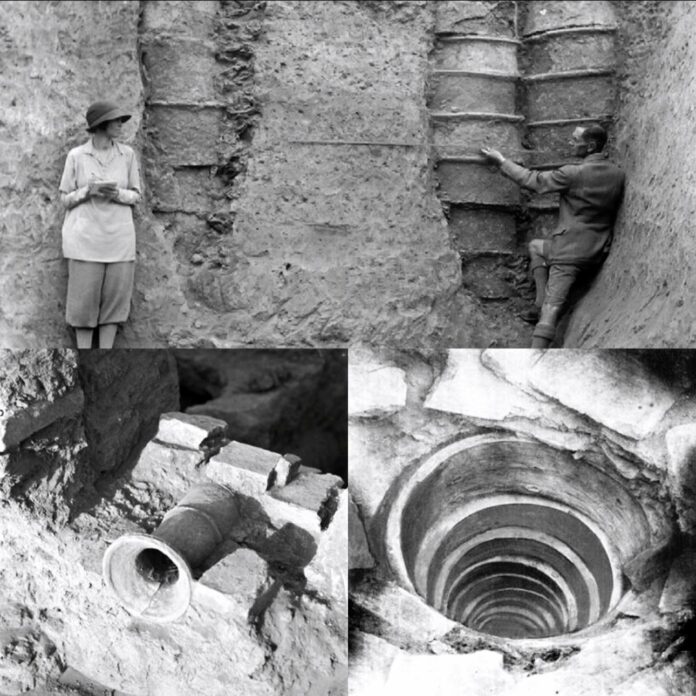In the 1920s, British archaeologist Sir Leonard Woolley led a series of groundbreaking excavations at Ur, an ancient Sumerian city in Mesopotamia. This extensive project, running from 1922 to 1934, was a joint endeavor of the British Museum and the University of Pennsylvania Museum. Woolley’s meticulous work unearthed a wealth of artifacts and structures that provided profound insights into the early urban civilization of Mesopotamia.
Among the most remarkable discoveries were the 4,000-year-old drainage systems beneath the city streets. These drains were not mere channels for wastewater; they reflected a sophisticated understanding of urban infrastructure, sanitation, and public health. The Sumerians’ advanced engineering skills were evident in the construction and maintenance of these systems, highlighting their capability in water management and urban planning.

Woolley’s documentation of these drains revealed the high level of social organization and technological prowess of Ur. The excavation also shed light on other significant aspects of Sumerian life, including their architecture, economy, and burial practices, particularly the royal tombs which illustrated the wealth and power of early dynastic rulers.
The extensive records from Woolley’s excavations, including notes, photographs, and artifacts, are preserved across several institutions. Efforts are ongoing to digitize these materials, making them accessible to researchers and the public, thereby continuing to expand our understanding of this ancient civilization.




